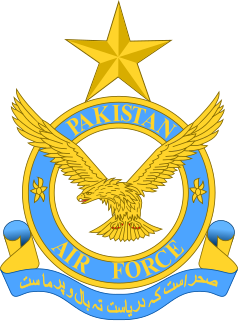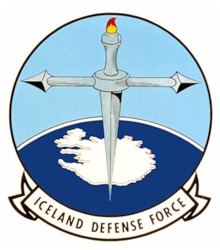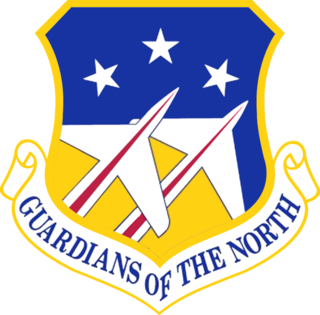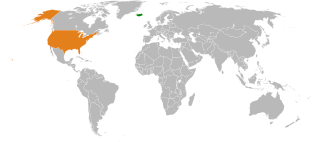 |
|---|
The Agreed Minute was a statute governing the nature of the U.S. military presence in Iceland from 1994 to 2006.
 |
|---|
The Agreed Minute was a statute governing the nature of the U.S. military presence in Iceland from 1994 to 2006.
In 1951 American troops returned to Iceland to form an Iceland Defense Force. As Iceland has had no standing military of its own since World War II, it was perceived that standing defences were required as the Soviet threat heightened. After the Cold War ended, the U.S was reluctant to maintain the expense of retaining forces in Iceland. Icelandic politicians, however, were reluctant to see the American forces leave. Hence the Agreed Minute was developed and signed in 1994 as a compromise in which both parties compromised and came to an understanding.
The Agreed Minute was last renegotiated in 2001. At the time, the U.S. Air Force committed itself to maintaining four to six interceptors at the Keflavík base, supported by a helicopter rescue squadron. The Air Force, in order to cut costs, announced plans to remove the four remaining jets in 2003. The removal was then delayed to address Icelandic demands for continued presence of the jets. After an unfruitful series of negotiations and two reshufflings of the Icelandic government the issue lay dormant until early 2006 when the U.S. Air Force issued an official statement that withdrawal of the aircraft was already being prepared. U.S. officials have since then argued that Iceland is in no need of U.S. military presence and the last remaining airmen left Iceland during September 2006.

Iceland's defence forces consist of the Icelandic Coast Guard, which patrols Icelandic waters and monitors its airspace, and other services such as the National Commissioner's National Security and Special Forces Units. Iceland maintains no standing army, the only NATO member for which this is the case.
Iceland took control of its foreign affairs in 1918 when it became a sovereign country, the Kingdom of Iceland, in a personal union with the King of Denmark. As a fully independent state, Iceland could have joined the League of Nations in 1918, but chose not to do so for cost reasons. It negotiated with Denmark to initially carry out most of its foreign relations, while maintaining full control. Denmark appointed a diplomatic envoy (Ambassador) to Iceland in 1919 and Iceland reciprocated in 1920, opening an Embassy in Copenhagen. Iceland established its own Foreign Service in April 1940 when Denmark became occupied by Nazi Germany and ties between the two countries were severed. The Republic of Iceland was founded in 1944. The Icelandic foreign service grew slowly in the post-WWII period, but increased rapidly after the mid-1990s. Iceland's closest relations are with the Nordic states, the European Union and the United States. Iceland has been a member of the United Nations since 1946. Iceland was a founding member of the World Bank in 1946 and NATO in 1949. In terms of European integration, Iceland was a founding member of the OEEC in 1948 and the Nordic Council in 1952, it joined EFTA in 1970, was a founding member of the CSCE in 1973 and the EEA in 1992 and joined Schengen in 1996.

The Armed Forces of the Argentine Republic, in Spanish: Fuerzas Armadas de la República Argentina, are controlled by the Commander-in-Chief and a civilian Minister of Defense. In addition to the Army, Navy and Air Force, there are two security forces, controlled by the Ministry of Security, which can be mobilized in occasion of an armed conflict: the National Gendarmerie, a gendarmerie used to guard borders and places of strategic importance; and the Naval Prefecture, a coast guard used to protect internal major rivers and maritime territory.

William James Perry is an American mathematician, engineer, businessman, and civil servant who was the United States Secretary of Defense from February 3, 1994, to January 23, 1997, under President Bill Clinton. He also served as Deputy Secretary of Defense (1993–1994) and Under Secretary of Defense for Research and Engineering (1977–1981).

The International Security Assistance Force (ISAF) was a multinational military mission in Afghanistan from 2001 to 2014. It was established by United Nations Security Council Resolution 1386 pursuant to the Bonn Agreement, which outlined the establishment of a permanent Afghan government following the U.S. invasion in October 2001. ISAF's primary goal was to train the Afghan National Security Forces (ANSF) and assist Afghanistan in rebuilding key government institutions; it gradually took part in the broader war in Afghanistan against the Taliban insurgency.

The Pakistan Air Force (PAF) is the aerial warfare branch of the Pakistan Armed Forces, tasked primarily with the aerial defence of Pakistan, with a secondary role of providing air support to the Pakistan Army and Navy when required, and a tertiary role of providing strategic airlift capability to Pakistan. As of 2021, as per the International Institute for Strategic Studies, the PAF has more than 70,000 active-duty personnel and operates at least 970 aircraft. Its primary mandate and mission is "to provide, in synergy with other inter-services, the most efficient, assured and cost effective aerial defence of Pakistan." Since its establishment in 1947, the PAF has been involved in various combat operations, providing aerial support to the operations and relief efforts of the Pakistani military. Under Article 243, the Constitution of Pakistan appoints the President of Pakistan as the civilian Commander-in-Chief of the Pakistan Armed Forces. The Chief of Air Staff (CAS), by statute a four-star commissioned air officer, is appointed by the President with the consultation and confirmation needed from the Prime Minister of Pakistan.

The Iceland Defense Force was a military command of the United States Armed Forces from 1951 to 2006. The IDF, created at the request of NATO, came into existence when the United States signed an agreement to provide for the defense of Iceland, which has only limited defense forces.
The Military Staff Committee (MSC) is the United Nations Security Council subsidiary body whose role, as defined by the United Nations Charter, is to plan UN military operations and assist in the regulation of armaments. Although the Military Staff Committee continues to exist, negotiation efforts between the United States, the Soviet Union and other nations in the late 1940s failed, and the committee has since been largely defunct, only serving in an advisory capacity.

The 85th Group is an inactive United States Air Force organization. Its last assignment was with United States Air Forces in Europe at Naval Air Station Keflavik, Iceland, assigned as a unit of the 48th Fighter Wing whose home station is at RAF Lakenheath, UK. It was inactivated on 28 June 2006.

Naval Air Station Keflavik (NASKEF) was a U.S. Navy station at Keflavík International Airport, Iceland, located on the Reykjanes peninsula on the south-west portion of the island. NASKEF was closed on 8 September 2006, and its facilities were taken over by the Icelandic Defence Agency as their primary base until 1 January 2011, when the Agency was abolished and the base handed over to the Icelandic Coast Guard, which has since then operated the base.

The Supreme Allied Commander Atlantic (SACLANT) was one of two supreme commanders of the North Atlantic Treaty Organisation (NATO), the other being the Supreme Allied Commander Europe (SACEUR). The SACLANT led Allied Command Atlantic was based at Norfolk, Virginia. The entire command was routinely referred to as 'SACLANT'.
The United States Air Force (USAF) deployed combat aircraft to Thailand from 1960 to 1975 during the Vietnam War. Today, US military units train with other Asian militaries in Thailand. Royal Thai Air Force Bases are an important element in the Pentagon's "forward positioning" strategy.
The invasion of Iceland by the Royal Navy and Royal Marines occurred on 10 May 1940, during World War II. The invasion took place because the British government feared that Iceland would be used by the Germans, who had recently overrun Denmark, which was in personal union with Iceland and which had previously been largely responsible for Iceland's foreign policy. The Government of Iceland issued a protest, charging that its neutrality had been "flagrantly violated" and "its independence infringed".

The United States has maintained diplomatic relations with Iceland since the mid-1800s.

The Allied occupation of Iceland during World War II began with a British invasion intent on occupying and denying Iceland to Germany. The military operation, codenamed Operation Fork, was conducted by the Royal Navy and Royal Marines. In time, some of the British garrison was replaced by Canadian and later American forces, despite the fact that the United States was not yet in the war.
This is a brief overview of historical warfare and recent developments in Iceland. Iceland has never participated in a full-scale war or invasion and the constitution of Iceland has no mechanism to declare war.

The NATO intervention in Bosnia and Herzegovina was a series of actions undertaken by NATO whose stated aim was to establish long-term peace during and after the Bosnian War. NATO's intervention began as largely political and symbolic, but gradually expanded to include large-scale air operations and the deployment of approximately 60,000 soldiers under Operation Joint Endeavor.

Icelandic Air Policing is a NATO operation conducted to patrol Iceland's airspace. As Iceland does not have an air force, in 2006 it requested that its NATO allies periodically deploy fighter aircraft to Keflavik Air Base to provide protection of its airspace. The first deployment of aircraft took place in May 2008.

Throughout the Cold War, the nation of Iceland was a member of the North Atlantic Treaty Organisation (NATO) and allied with the United States, hosting a US military presence in Keflavík Air Base from 1951 to 2006.

The withdrawal of United States troops from Afghanistan describes the drawdown of United States Armed Forces in the Afghanistan war and the plans after its post-2014 presence when most combat troops had left Afghanistan at the end of 2014.